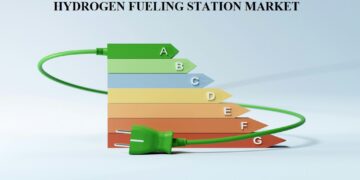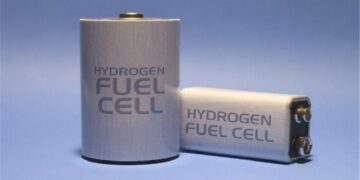The Agora Verkehrswende initiative underscores the role that the transport sector plays in achieving Germany’s climate policy goals with the statement that transforming the transport sector is crucial for the success of the clean energy transition.
The clean energy transition and the way it is achieved will be determined by the way the transport sector gets transformed over time.
And when one takes a look at the official figures, there is indeed a confirmation that comes out of it: As per the German Federal Environment Agency, the transport sector comprised of almost 19.8% of the German greenhouse gas emissions in 2022. The point that the transport sector goes on to account for such a large proportion of the overall emissions makes it both a challenge as well as an opportunity. If the emissions in the transport segment continue to remain high, Germany will, in all likelihood exceed the targets which are set out in the Federal Climate Protection Act. If in case, the mobility transition in terms of climate-friendly transport infrastructure is successful, the positive effects are going to be all the greater. Let us look into the role eMobility plays in this.
Electric Motors: The Benefits
The present scenario is that the development of electric cars when it comes to more affordable price segment happens to be in full swing. This factor will make electric driving much more accessible to the society in the future. Hydrogen vehicles that generally make use of hydrogen as a source of energy to drive an electric motor, also wins some points due to the advantages of an electric motor. In contrast to battery-powered vehicles, although, the complete efficiency of energy generation, storage, as well as supply for electric motors is quite lower. Moreover, it will also not be possible to go ahead and manufacture green hydrogen in the quantities that are required for mobility in the foreseeable future.
There is no looking back from the statement that electric vehicles are indeed the means of transport of the future, specifically when we talk of road transport in particular. However, there has to be proper reasoning behind it. Apart from the addition to the electric drives, capacities are also crucial and need to be invested in the development along with the research of other alternative fuels. These are e-fuels and biofuels, for instance. Apparently, the arguments favoring electric driving include the high efficiency that electric motors have. At 64%, it is way higher than that of cars that run on petrol and diesel engines. Energy recovery in terms of braking and also emission-free driving also happen to be some major benefits. The counter-arguments that surround high energy consumption throughout production and high purchase costs can be refuted if one takes into account that the carbon footprint that is generated during the production phase is relativised with the length of usage and in relation to the overall life cycle of the vehicle.
Topics that are trending when it comes to eMobility
Battery-powered cars will go on to characterize the streetscape in 2035, the year when production of combustion engines gets banned. The point that electric driving happens to be no longer in its infancy is indeed clear from the emergence and further development of novel and pioneering technologies that exist in the eMobility sector.
The topics that are trending include bidirectional charging, having its subtypes vehicle-to-grid- V2G, vehicle-to-home- V2H, and vehicle-to-device- V2D. in a scenario of charging in two directions, the car battery happens to serves as a medium when it comes to giving electricity back in the public grid like an energy storage device that comes with the capacity of supplying a home with electricity when that’s required or even as a charging option in the case of external technical devices. But there is still some more catching up to do before this technology gets rolled out across the board: The ISO15118-20 benchmark has gone on to create a legal basis when it comes to communication, however the successful execution is dependent on the correspondingly bidirectionally capable software as well as hardware that interact smoothly with one other. Another innovative communication benchmark is Plug & Charge, which also happens to be a part of the ISO 15118 standard.
The batteries within electric cars happen to be relevant to more development of electromobility and hence making it more sustainable. The principle is that the batteries used in cars get utilized as stationary energy storage units in terms of surplus electricity, coming, for instance, from PV systems. The positive side effects of this are the stabilisation and security when it comes to the supply of the power grid, as well as a longer life cycle of the battery.
Driving electrically makes immense sense
The point that electromobility goes on to play a very decisive and engaging role in the energy and mobility shift is especially clear from the fact that the corresponding political course has already been set both across Germany and throughout the European Union. To establish battery-powered driving throughout the board, the AFIR regulation, for instance, helps with charging along with the payment process when it comes to the users. The expansion in terms of capacities to develop the eMobility further and, at the same time, integrate it into a complete ecosystem of numerous technological innovations and components highlights the success to date and is indeed a groundbreaking phenomenon when it comes to the ramping-up of the electromobility segment. The sure-shot guarantee of success happens to be a blend of political guidelines and also a transition in the minds of road users.




































